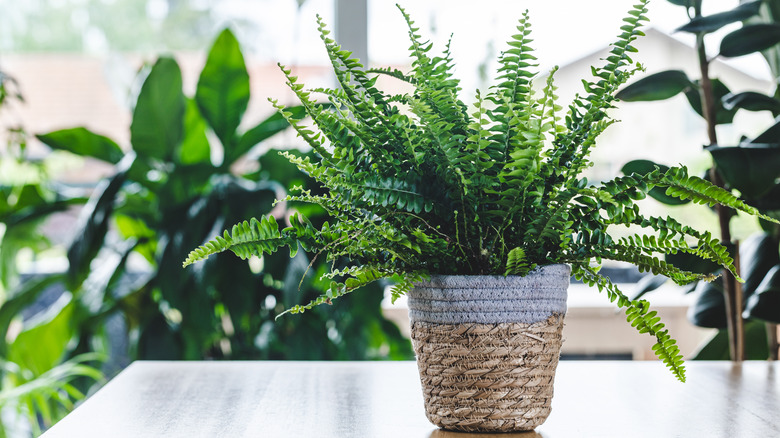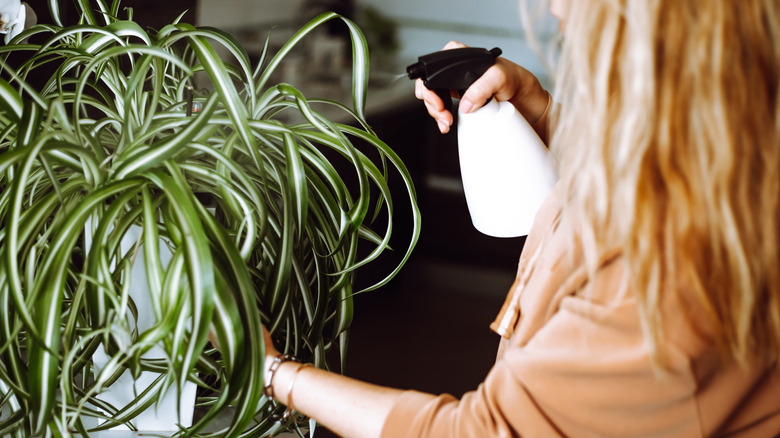The Popular Houseplant Experts Say To Avoid If You Suffer From Allergies
When choosing the perfect plant for your style and capability, beauty and ease of care are typical things to consider when deciding which plant to bring home. Ferns are a lovely plant to raise indoors since they are easy to care for and can instantly brighten up a room. These low-maintenance plants merely require basic sun and proper moisture to thrive and they are non-toxic to pets and children to boot. However, medical experts warn that ferns can pose a big problem for allergy sufferers.
Though it may seem surprising since ferns don't flower and get pollinated, they actually reproduce through their spores. Consequently, very small, often unseen spores get released into the air. Unfortunately, they can easily be inhaled and that can affect people who have allergies. Fern spores are not only very tiny, but can stay in the air which increases the chance of inhalation, making them an aeroallergen. When inhaled, the spores can irritate the nose and lungs, and cause sneezing, runny or stuffy nose, itchy, watery eyes, and coughing. Fern spores can also cause contact dermatitis and skin rashes.
Types of ferns that are less allergy-inducing
Every person has a different allergic trigger as well as a level of exposure to a certain plant that might exacerbate their allergies. Therefore, naturally allergic reactions to ferns vary depending on a person's sensitivity. If you already have existing allergies, especially if you are sensitive to mold spores, you may be more susceptible to fern-induced symptoms. A family history of allergies is another sign. Still, the type of fern you have can also be a factor. Some fern variations produce fewer spores than others and can decrease the risk of allergies.
The Boston fern and staghorn fern are lower allergen ferns. Boston ferns do not produce viable spores, meaning these ferns are sterile. Similarly, staghorn ferns do not often produce spores, greatly reducing their capacity to release allergens into the air. However, keep in mind that even low-spore-producing ferns have the potential to induce symptoms in people who are highly sensitive.
Lower your allergen exposure from ferns
If you simply love your fern and want to keep it, you can do simple things to minimize the risk of allergic reactions. First, keep it out of the bedroom and place it in an area in your home where there is good airflow so the spores aren't concentrated in a small space and can more easily dissipate. Misting the fern's fronds can help keep spores from flying around more than if not misted. Of course, anytime you touch the plant, you should wash your hands. Placing an air purifier in your home can also help lessen allergies.
If you rather not take the chance of getting an allergy, opt for plants that look similar but have a much less allergy load. The best houseplants for people with allergies include snake plants and spider plants, which are easy to care for and known for their air-purifying properties. Chinese Evergreen is another and available in various colors and patterns. The peace lily can help improve indoor air quality, but is best for homes without pets or children, as they are toxic if ingested.


